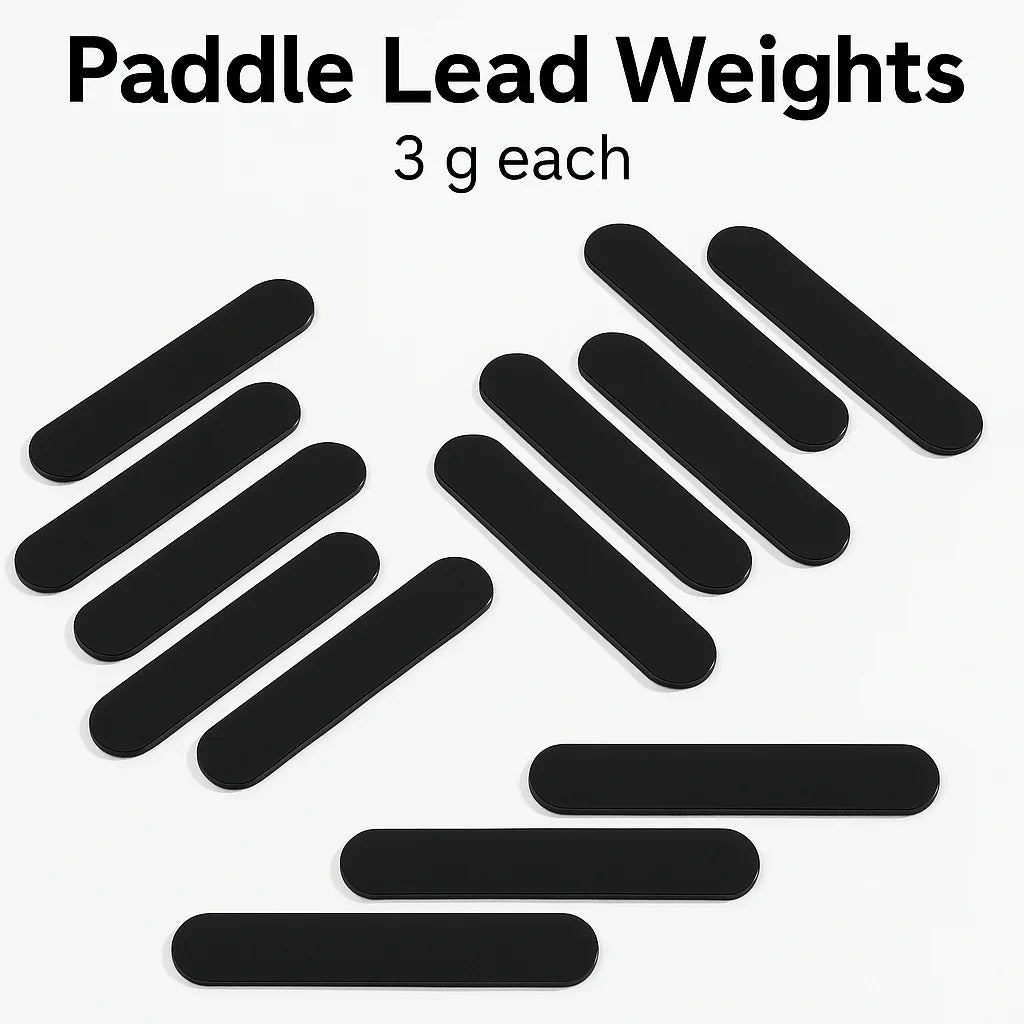If you’ve ever picked up two paddles that look identical but feel completely different, you’re not crazy. The weight of a pickleball paddle dramatically affects your game—from swing speed and power to control and injury prevention.
In this guide, we’ll break down the best paddle weights for every type of player, how to adjust your setup, and how custom accessories like lead tape, grips, and paddle bands can fine-tune the feel to fit you perfectly.
🧠 Why Paddle Weight Matters
The weight of your paddle influences:
-
💥 Power on drives and overheads
-
🧤 Control on soft shots and resets
-
🌀 Spin and wrist mobility
-
🤕 Stress on your arm, elbow, and wrist
That’s why pros are obsessed with getting it just right. The good news? You don’t need to buy five paddles to find your perfect weight—you can customize it with simple upgrades.
📏 Pickleball Paddle Weight Categories
| Type | Weight Range | Who It’s Best For |
|---|---|---|
| Lightweight | 7.0–7.4 oz | Quick hands, control players, juniors |
| Midweight | 7.5–8.2 oz | Balanced power + control |
| Heavyweight | 8.3–9.0+ oz | Maximum power, strong wrists, tennis crossover |
Most paddles land in the midweight range—but how they feel in your hand can vary widely based on grip, balance, and added accessories.
🎯 Step 1: Add Lead Tape to Customize Paddle Weight
Lead tape is the easiest way to adjust paddle weight without buying a new one. It’s fully reversible, and even a few grams makes a big difference.
🎯 Where to Place It:
-
Top of the paddle (12 o’clock): Adds power
-
Sides (3 & 9 o’clock): Improves stability
-
Throat area: Slight weight increase, preserves control
🛠 Pro Tip: Start with 2–4g and test before adding more.
✋ Step 2: Upgrade Your Grip to Match Your Weight Preference
Heavier paddles need a more secure grip—especially in sweaty conditions. Whether you're using a light paddle and want a thicker hold or swinging a heavier one that needs a bit more tack:
Benefits:
-
Reduces fatigue
-
Improves control
-
Absorbs vibration (especially with heavier setups)
A cushioned grip + lead tape combo is a game-changer for comfort and performance.
🏷 Step 3: Add a Custom Paddle Band for Feel & Consistency
While a paddle band doesn't affect weight much, it does help you:
-
Lock your hand into the same position every time
-
Build muscle memory with a consistent grip point
-
Instantly recognize your paddle on the bench
📸 Insert “your text here” band product image
Plus, it adds style that factory paddles lack. Let your gear reflect your personality while making your setup more functional.
🧪 Example Setups for Every Player
| Player Type | Recommended Weight | How to Customize |
|---|---|---|
| Control-Focused Dinker | 7.3–7.6 oz | Lightweight paddle + thin grip + band |
| All-Around Rec Player | 7.7–8.2 oz | Midweight paddle + tacky grip + lead tape at 3/9 |
| Power Player | 8.3+ oz | Add lead tape at 12 + cushioned grip |
| Tennis Crossover | 8.0–8.5 oz | Long handle + heavy top + custom band |
✅ Final Thoughts: Find Your Sweet Spot
There’s no “one weight fits all” paddle—but there is a perfect paddle for you.
Start with something close to your goals, then dial in the feel with:
🎯 Lead tape for balance
✋ A better grip for control
🏷 A custom paddle band for identity and consistency
It’s the easiest way to play better without replacing your paddle.
🚀 Build Your Perfect Paddle Setup
🏷 Create Your Paddle Band
✋ Get the Right Grip
🎯 Fine-Tune with Lead Tape

